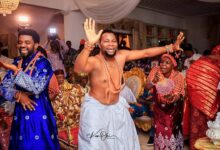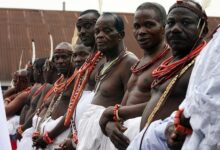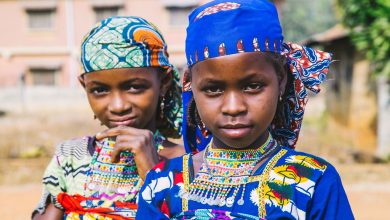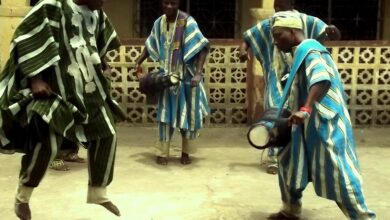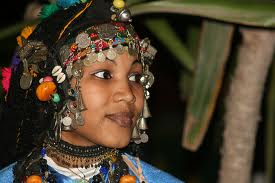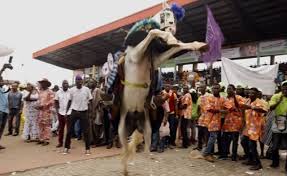Iwu – The Dying Traditional Body Markings of Edo People
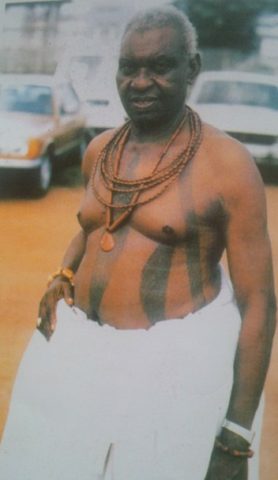
Introduction
What is Iwu in Edo Culture?
You might have come across some Edo folks with different kinds of markings on their stomachs, sides and backs, then wonder why they are there. These markings are known as Iwu in the culture of Edo people in southwestern Nigeria.
Not until recently did the tradition of Iwu witness a great decline and the set of Edo people with Iwu markings are mostly presently over seventy years of age. The tradition survived until the 1940s: hardly will one see an Edo young man or woman with Iwu markings on his or her body in recent times.
Marking, scarification and tattooing are not alien practices to the African culture; they have been used from time immemorial for identification, beautification, stratification and so on. Some draw their markings on the face, some on the legs but the Edo people went for the body and torso. A good example of facial marking or scarification is the ‘Ila’ of Yoruba people.
Edo people accepted this art of facial identification marks, also known as tribal marks, until five centuries ago when they ditched the facial markings and created Iwu, the body and torso markings.
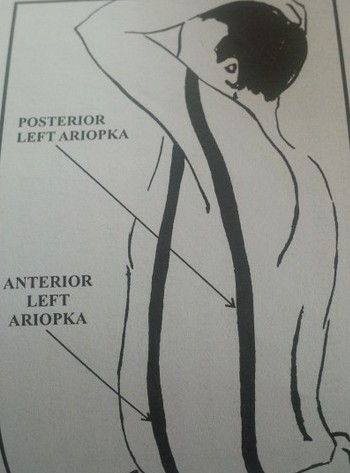
Eligibility
Who can have Iwu in Edo land?
Unlike the facial Ila of the Yoruba people which is acquired few months after birth, Iwu is to acquired during the transition from adolescent to adulthood. In short, Iwu signifies Adulthood. Edo men and women would usually have their Iwu done shortly before marriage.
Although Nyandael and Burton stated in their accounts that the marking/tattooing took place during infancy and youth. Iwu also signifies citizenship because back then, slaves were not allowed to have Iwu markings in Edo land.
Who Draws Iwu and How is it Drawn?
The Iwu body or torso markings are drawn by the Osiwu, the traditional surgeon of the Edo society. Dierick Ruyters, the Dutch chronicler who sojourned in Benin City early in the seventeenth century wrote:
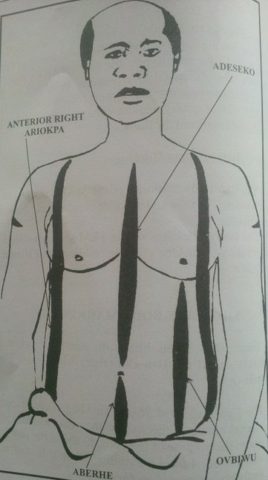
“[The Bini] cut their body from the armpits to about the groin, or in the middle, with three long cuts on both sides, each one finger broad, and consider this a great virtue conducive to their salvation”
1602, in Talbot 1926, vol. 2:399
The merchant David Nyandael later commented on the gender variation of the markings:
“The females are more adorned with these ornaments than the males, and each at the pleasure of their parents. You may easily guess that this mangling of the bodies of these tender creatures may be very painful; but since it is the fashion here and is thought very ornamental, it is practiced by everybody”
1705, in Talbot, p. 399
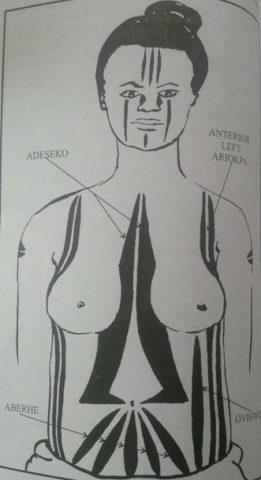
The Iwu body markings of the male consist of seven marks. The OBA and his children get only six of the marks. The body markings of the female consist of sixteen marks. The OBA’s female children get fifteen of these marks.
However, people of ancient Edo land did not have Iwu markings until when an incident, according to history, brought about the markings and this drives us back to the history of Iwu.
History of Iwu Markings
The origin of Iwu markings rely on oral history passed from one generation to another.
In one version collected by Ekhaguosa Aisien from Unionmwan Orokhorho (pers. com., 1985), a traditional surgeon, the tattoos originated during the reign of Oba Ehengbuda in the late sixteenth century. Ehengbuda married the daughter of the Yoruba ruler of Akure, but she refused to consummate the marriage because he did not have “Akure tribal marks.”
The enraged Ehengbuda abused his wife, word of which reached the Alakure. When Ehengbuda visited Akure, his father-in-law attacked him with a cutlass, and Ehengbuda’s body thereafter bore the scars of this assault. So as not to embarrass their king, his subjects imitated them.

Jacob Egharevba, however, offered a different account (1968:15): Iwu originated with Oba Ewuare (ca. 1440). Ewuare, distraught over the death of two of his sons on the same day, punished his subjects, who then fled the city in panic. To stem this exodus and ensure that deserting subjects could be easily identified, Ewuare ordered everyone tattooed.
As aforementioned, it is hard to find an Edo indigene with Iwu markings these days due to the extinction of the practice since around 1940s.
But, once it happened, it becomes history and history will never forget – Teslim Omipidan. This is the case for Iwu – body markings of the Edo people.
References:
- EKHAGUOSA AISIEN; IWU – THE BODY MARKINGS OF THE EDO PEOPLE (Available on EBay)
- Paschal Ezehi; THE TRADITIONAL UPPER BODY SCARS AND TATOOS IN BENIN: Edo State Government Official Website
Questions? Advert? Click here to email us.



